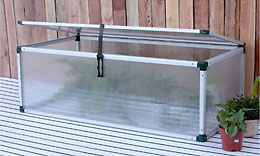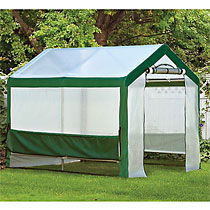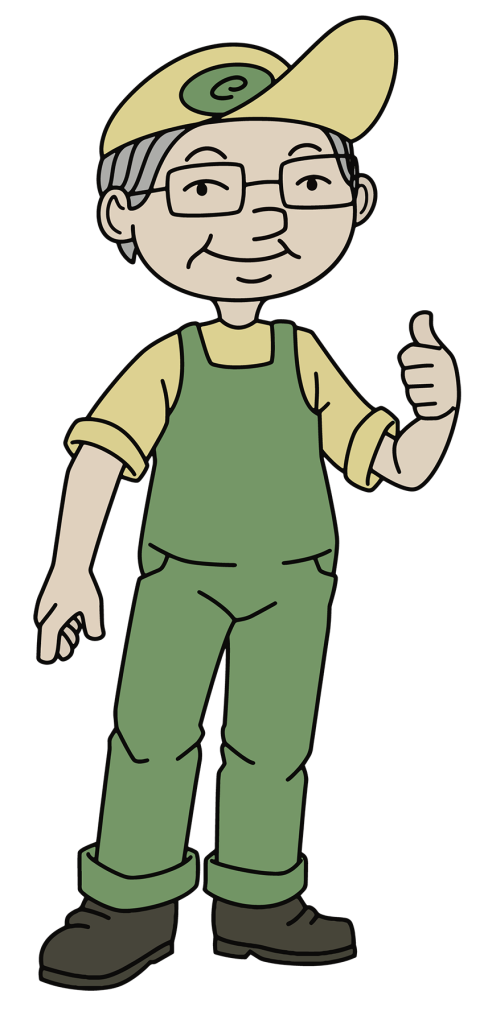By Carol Yaw
 Cold frames and portable greenhouses offer an economical, quick solution for plant protection during winter rains, wind, sleet and snow. They act as protective, mini greenhouses, trapping free solar energy to heat and radiate back to your soil and plants. When not needed, they store compactly out of the way until next season.
Cold frames and portable greenhouses offer an economical, quick solution for plant protection during winter rains, wind, sleet and snow. They act as protective, mini greenhouses, trapping free solar energy to heat and radiate back to your soil and plants. When not needed, they store compactly out of the way until next season.
 Seasonally you can use these portable shelters in a multitude of ways with no or very little heat depending on your location:
Seasonally you can use these portable shelters in a multitude of ways with no or very little heat depending on your location:
In Winter – Give bulbs their required cold conditions before forcing for spring. After freezing has passed, they are great for sowing seeds of tree, shrub, wildflower and perennials that require a cold treatment for better spring germination. Overwinter crops for spring eating, such as spinach, lettuces and onions.
In Spring – They provide a practical “half way” house between your indoor windowsill and outdoor garden. Use them to start seeds and harden off seedlings before planting outside in the garden.
In Summer – Use them as a dehydrator for fruits and veggies. With a little shading, root herbaceous and woody cuttings, and jump start fall crops like carrots, beets and kale.
In Fall – Lettuce, spinach, onions and other late-fall crops thrive inside well after frost that normally would have killed them outside. Also store favorite plants not quite hardy enough to make it outdoors through the winter.
 Location – As possible, during the winter choose a site that will face south to get maximum benefit from the low winter sun. Ideally, you’d like full sun from mid-morning to mid-afternoon. The area should be level, well-drained, and protected from the winds. A water source nearby is helpful.
Location – As possible, during the winter choose a site that will face south to get maximum benefit from the low winter sun. Ideally, you’d like full sun from mid-morning to mid-afternoon. The area should be level, well-drained, and protected from the winds. A water source nearby is helpful.
 Temperature Control – Use a thermometer inside to help you gauge when it is warm enough to plant. See Thermometers. Even in winter, temperatures can heat up dramatically, so venting is essential. See Solar Vent Controls.
Temperature Control – Use a thermometer inside to help you gauge when it is warm enough to plant. See Thermometers. Even in winter, temperatures can heat up dramatically, so venting is essential. See Solar Vent Controls.
See All Greenhouse Models






